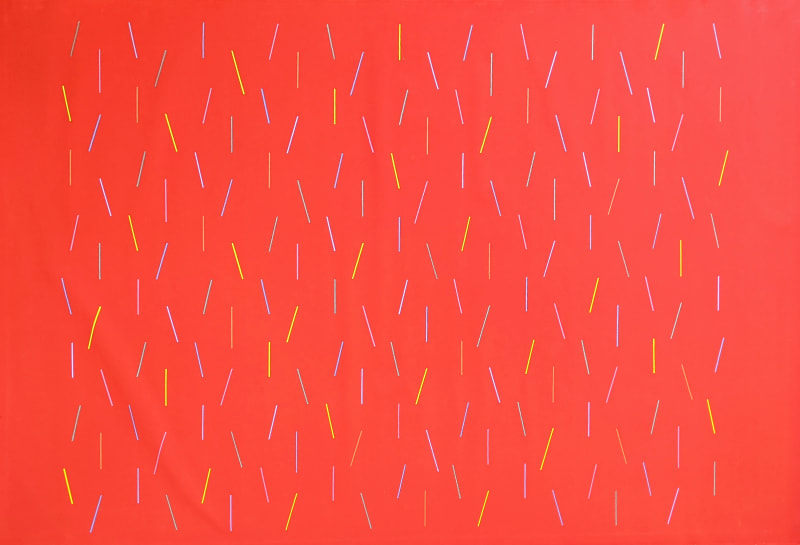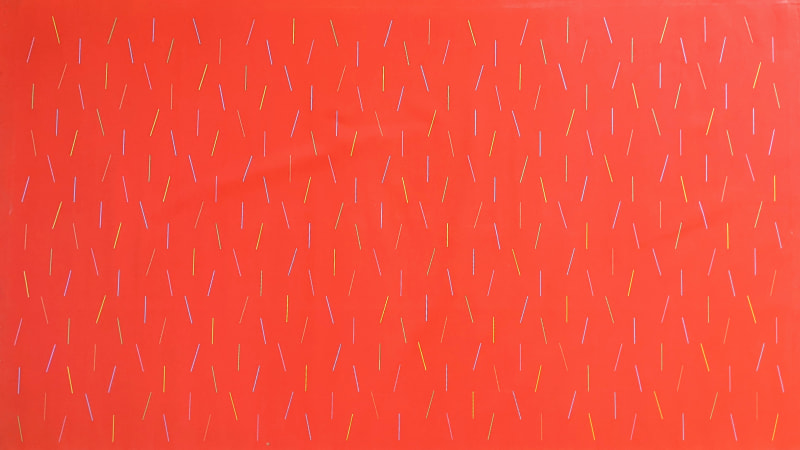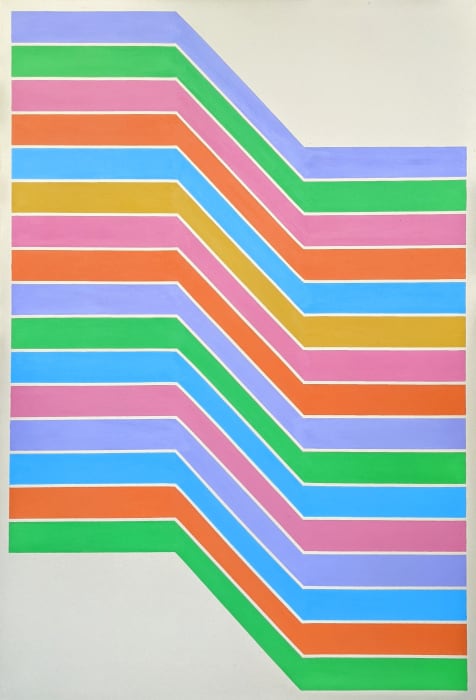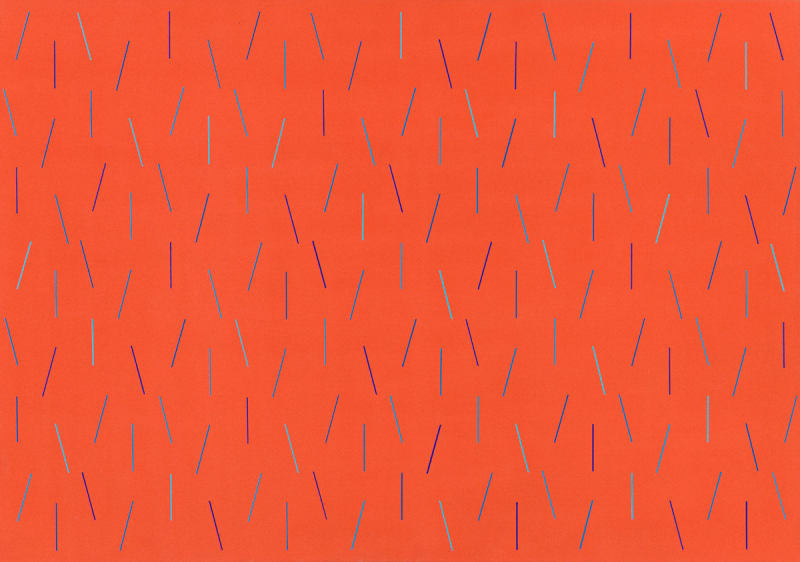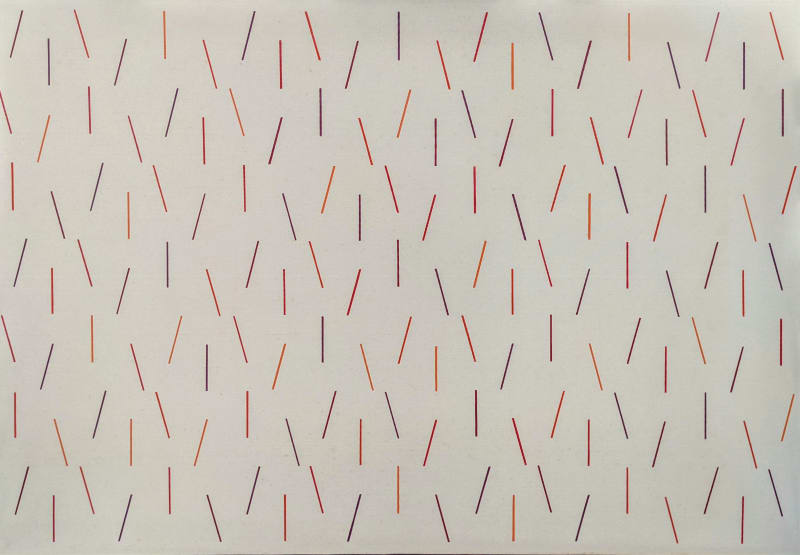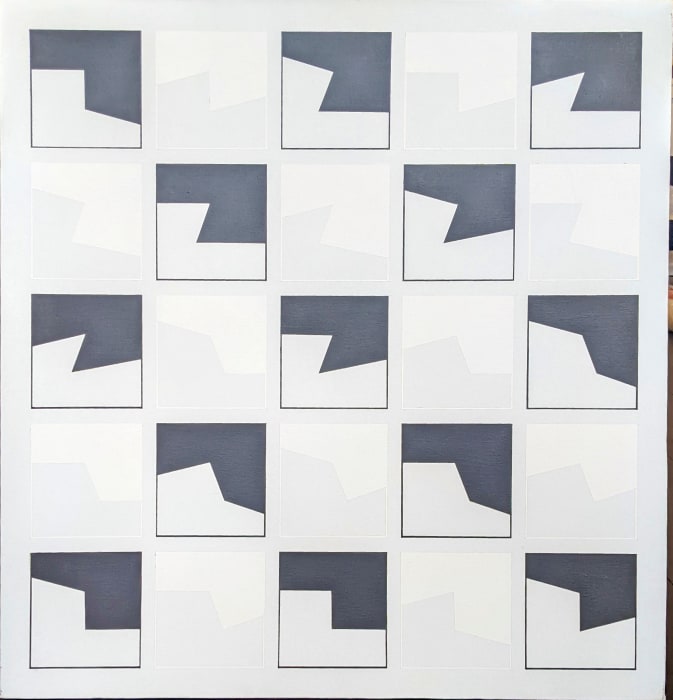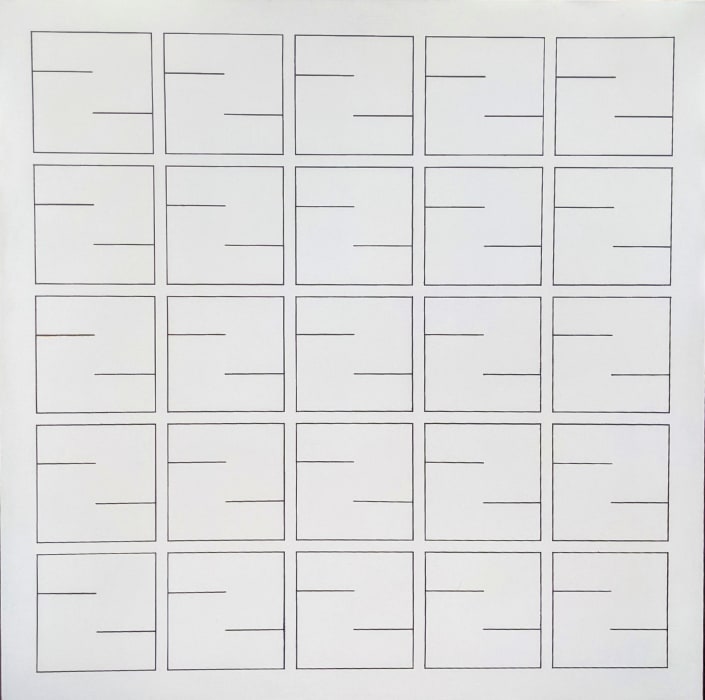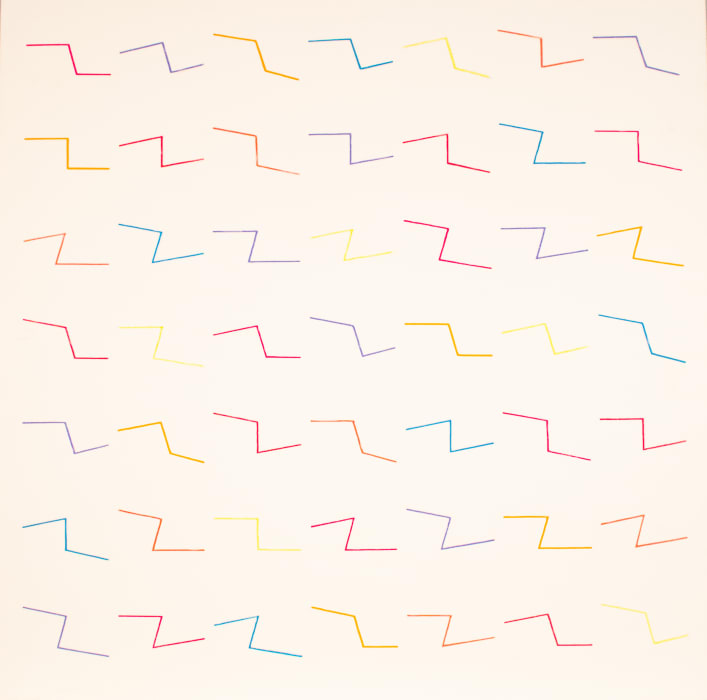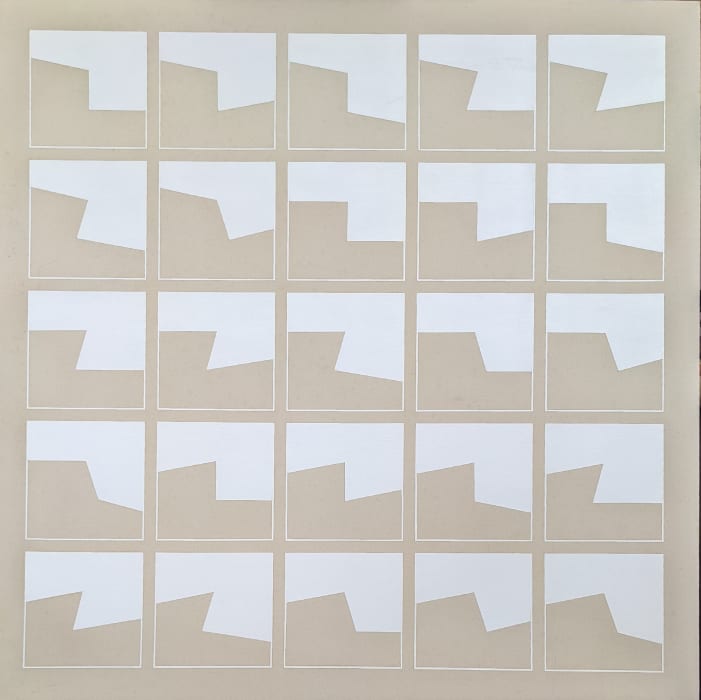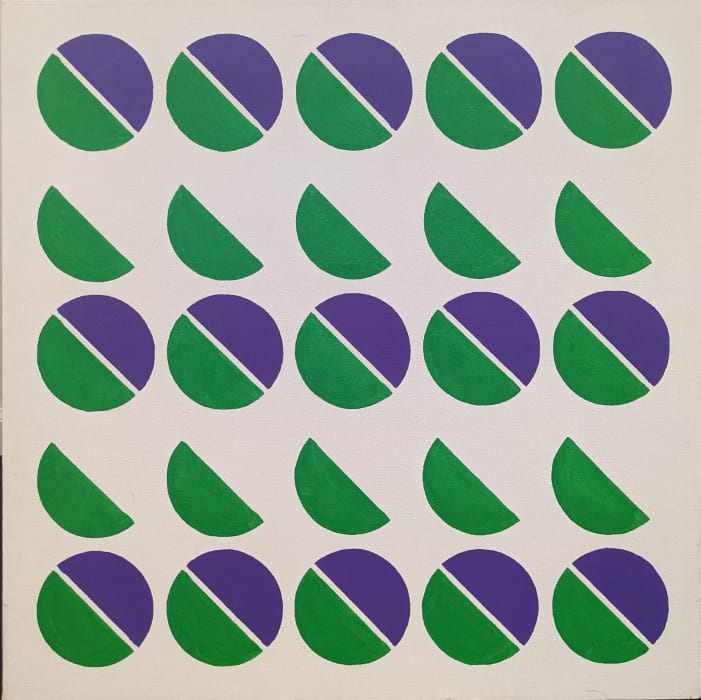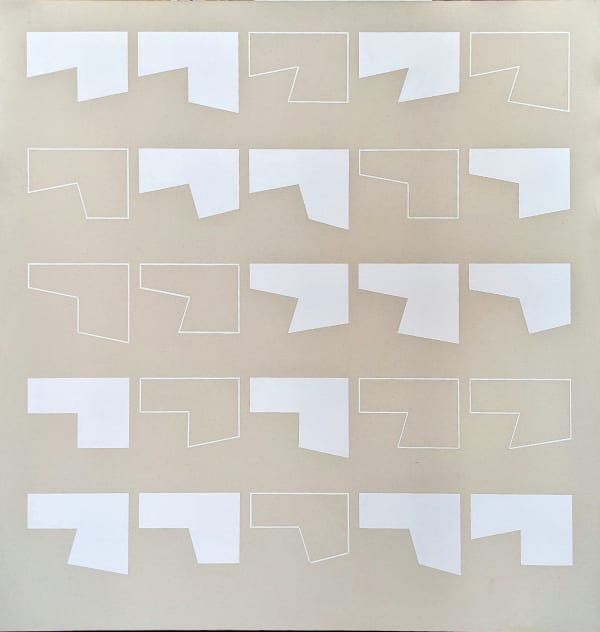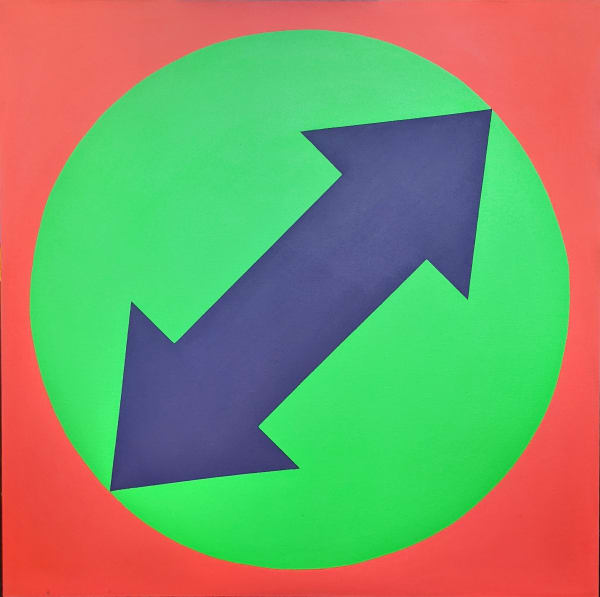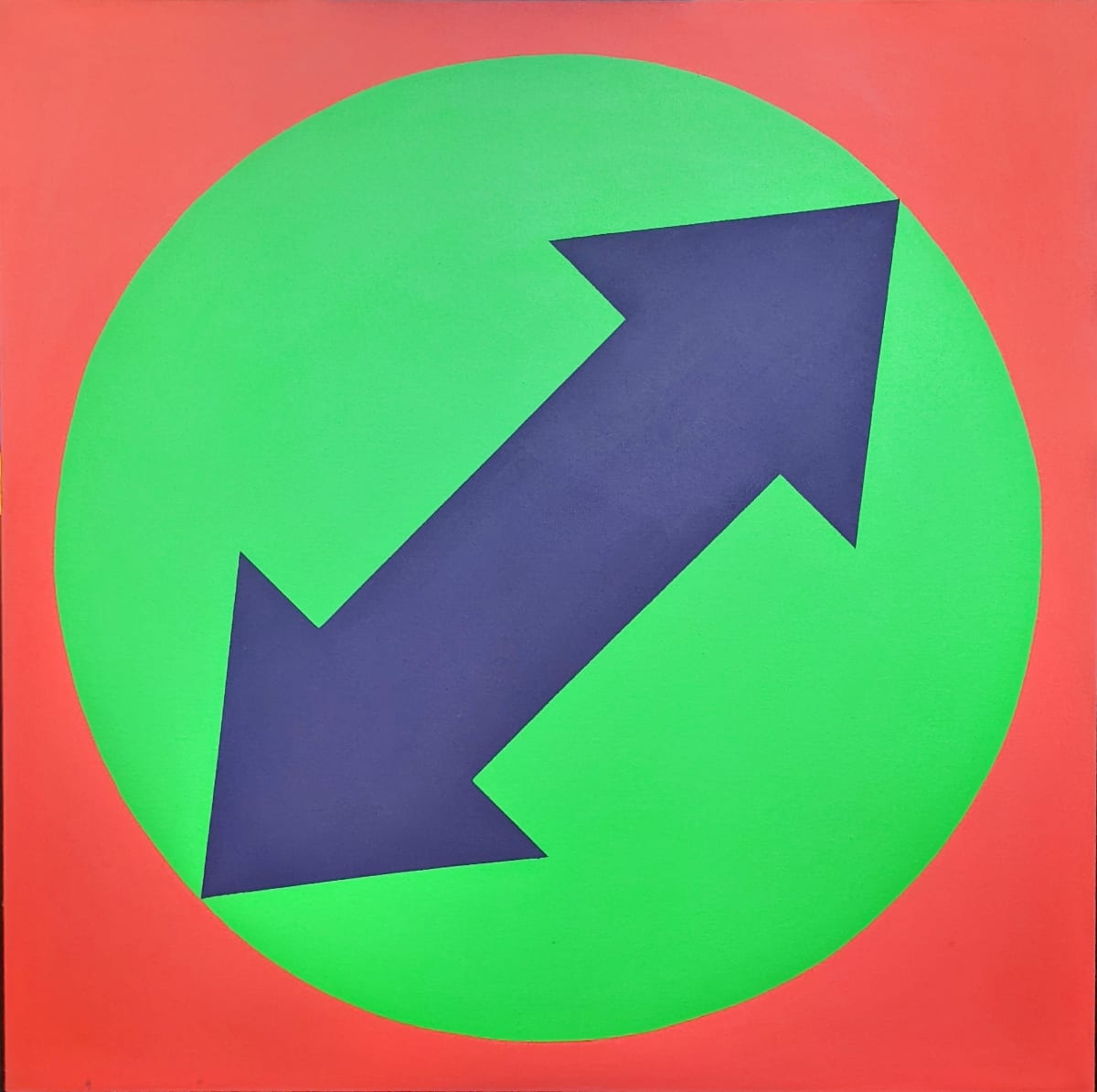-
 Eleven Thirteen, (Dancing Line Series), 1972
Eleven Thirteen, (Dancing Line Series), 1972 -
 Timeline Seventeen, 1972
Timeline Seventeen, 1972 -
 Zic-Zam, 1971
Zic-Zam, 1971 -
 Five Twenty Three, 1974
Five Twenty Three, 1974 -
 Twelve Twenty Three, 1974
Twelve Twenty Three, 1974 -
 Untitled, c. 1970
Untitled, c. 1970 -
 Black Trapezoid, 1988
Black Trapezoid, 1988 -
 Blue Trapezoid, 1988
Blue Trapezoid, 1988 -
 Zil-Zog, 1971
Zil-Zog, 1971 -
 Two Fifty Three B, 1972
Two Fifty Three B, 1972 -
 Three Forty Six, 1964
Three Forty Six, 1964 -
 CUBE III
CUBE III -
 Two Twenty Eight, 1969
Two Twenty Eight, 1969 -
 Untitled, 1971
Untitled, 1971 -
 Arrows, 1971
Arrows, 1971 -
 Six Twelve, 1972
Six Twelve, 1972 -
 Untitled
Untitled -
 Big Z One, 1972
Big Z One, 1972
Elliott Thompson’s career as an artist spanned more than six decades but only from about 1965 to 1980 was he at the center of the art world. In that period, he was one of the painters clustered around Washington, DC who rejected the painterly forms of abstract expressionism. Instead, he preferred impersonal hard-edged shapes on monochromatic fields that reinforced the flatness of the picture surface. Thompson’s work at this time represents some of the finest examples of this style that flourished during the 1960s and 1970s.
Thompson was born in Newport, Rhode Island in 1912 but he grew up in Washington, D.C. and spent most of his life in the area. He possessed a Scandinavian heritage and a middle-class background but he was only a mediocre student and dropped out of Briarly Hall Military Academy (Poolesville, MD) without a diploma. From 1929 to 1933, he joined the Navy and sailed the world through the worst part of the Great Depression.
After his enlistment ended in the Navy, Thompson worked at a variety of government jobs that eventually turned into a civil service career. While employed by the U.S. government, he took classes and received a BA in accounting from Ben Franklin University (later George Washington University). In 1939, he took a job with the Bureau of the Budget and for the next 20 years existed in a world of numbers and budgets. Meanwhile, Thompson’s personal life was in turmoil. He struggled with alcohol addiction and three failed marriages.
From 1953 to 1957, he lived in Paris while still working for the U.S. government. The five-year stay inspired him with a love for French culture and become an artist. Although he had never painted seriously, Thompson began studying art in Montparnasse in Paris at André Lhote’s academy. Thompson studied directly with Lhote, a Cubist painter who had an excellent reputation as a teacher. At this point, Thompson was still a part-time painter, concentrating on figurative scenes and still lifes.
In 1967, Thompson was 55 years old and there was no particular reason to predict a stellar artistic career for him. However, he now had more than 30 years of service with the federal government, and so was eligible for retirement. He decided to give up his position as a financial officer in the Supply and Maintenance Agency of the U.S. Army, and devoted himself to art on a full-time basis.
That same year, he began studying with Roy Slade at the Corcoran School of the Arts and Design, the school associated with the Corcoran Gallery of Art. Thompson made rapid progress with his painting. He abandoned realistic subject matter for non-figurative art and switched from oils to acrylics, lured by their faster drying time. He soon joined the faculty of the Corcoran and began exhibiting his geometric abstract canvases. By the 1970s, the long-time bureaucrat had become a critically acclaimed artist.
Even in his first efforts, Thompson’s approached painting as a kind of problem in measurement and organization, as befitting a man who had worked with numbers his entire life. His earliest paintings from 1967 to 1969 were based on the division of a square, mostly in black and white, or just white on raw canvas. Many of them were neat abstractions of repetitious forms assembled on a grid. A critic at one of his exhibitions described his work as “mathematical and sequential, formal, disciplined, austere.” Even when he began introducing color into his canvases in 1971, he continued to focus on pattern and repetition.
Thompson displayed his art in several group and solo shows from the late 1960s through the early 1990s. Between 1969 and 1973, his most prolific period, he had regular exhibitions at the Jefferson Place Gallery, a noted supporter of Washington Color School artists. In 1974, the Corcoran Gallery of Art presented a retrospective exhibit of his work, affirming his meteoric rise.
Because Thompson lived in Washington, DC at the time, he was often linked with members of the Washington Color School such as Gene Davis, Thomas Downing, Paul Reed, and Howard Mehring. In some ways, he did not fit comfortably in this category. Thompson came late to the movement and his earliest geometric abstracts were in black and white, eschewing color.
But Thompson did adopt a consciously impersonal approach to paint application. There was an absence of visible brushstrokes in Thompson’s work, and an emphasis on sharp composition. Each area was clearly defined. Instead of the broad gestures and the emotional mysticism so prized by abstract expressionists, Thompson emphasized formal elements such as lines and shapes. He never tired of this approach. In 1979, he began a major series of hard-edged geometric canvases based on the trapezoidal form.
However, by 1980, the aesthetic of hard-edged abstraction had fallen out of fashion among art critics. That year, one critic reviewed one of Thompson’s gallery shows by noting that Thompson “had with dogged loyalty remained true to his straight edge, his masking tape, his panels of flat, well-chosen colors.” Though he had only been painting seriously for 13 years, he was already 68 years old. Unlike many painters, he had never staked his life on an art career. Fame meant little to him. A fourth marriage in 1983 to a woman 38 years younger was a happy distraction. From 1984 to 1987, he lived and painted in a small village in southern France but his desire to paint or teach gradually faded away. In 1987, the couple returned to the United States and moved to northern Virginia. He gradually drifted into obscurity, dying in 2016 at age 103.
Elliott Thompson’s career as an artist spanned more than five decades but only from about 1965 to 1980 was he at the center of the art world. His hard-edge geometric abstracts were precise, impersonal, and devoid of almost any reference to the outside world. His best canvases offered viewers a meditative space where form, color, line, scale, and texture were almost all that mattered. He did not shine for long but he shined brightly.



